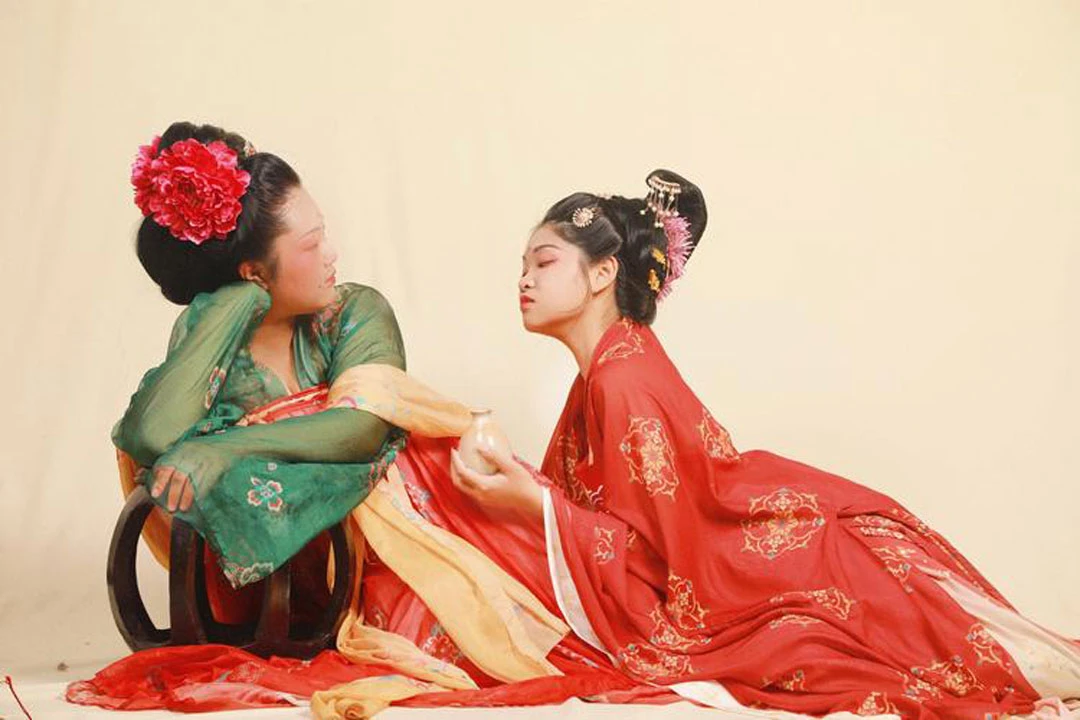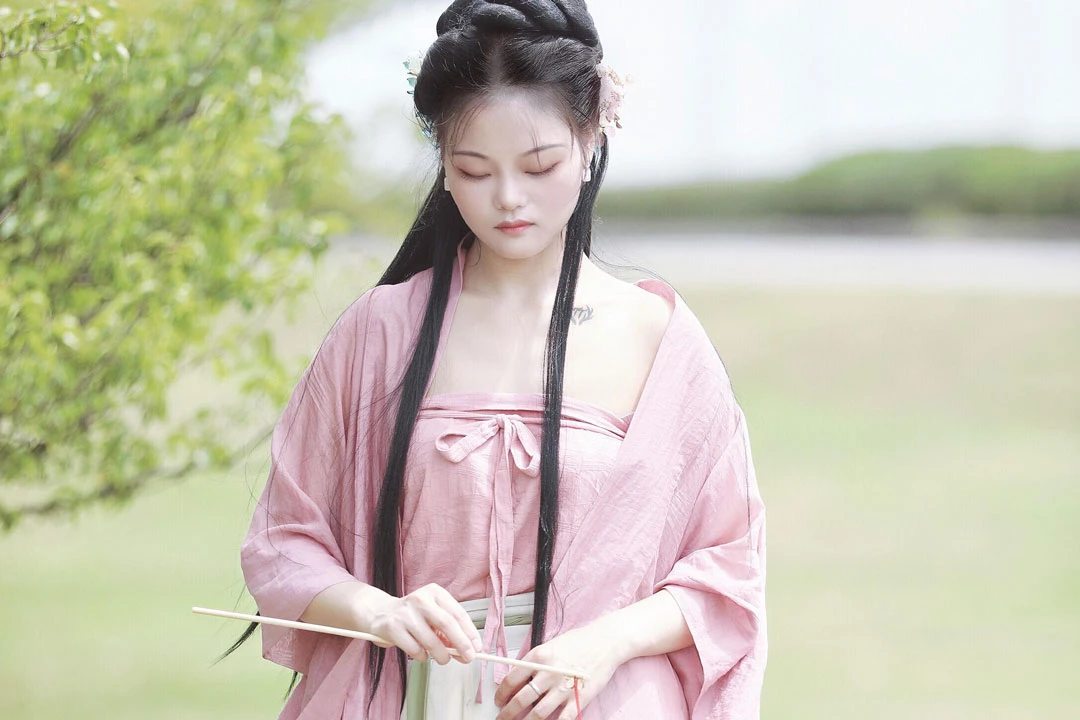From the grandeur of the Qin and Han dynasties to the cultural refinement of the Wei and Jin periods, the magnificence of the Sui and Tang eras, and the structured aesthetics of the Song and Ming dynasties, each era reflects the spiritual beliefs and philosophical ideals of Chinese civilization. The Hanfu dress, as the crystallization of Han culture, intricately intertwines with these exceptional periods, linking the present generation with the legacy of their ancestors.
Many enthusiasts express a profound sense of familiarity upon donning Hanfu for the first time, attributing this connection to the immersive influence of history and culture. This revival of Hanfu extends beyond being merely a garment; it encompasses the original lifestyle and temperament intrinsic to Han culture. In a diverse contemporary society, the resurgence of Hanfu and traditional culture is not an endeavor to salvage cultural remnants, nor is it an attempt to solidify the past. Instead, it represents a journey to reclaim an elegant Chinese way of life and rekindle the memories of a millennium-old heritage.
Hanfu, as a cultural phenomenon, radiates a resplendent allure that enhances the splendor of traditional China. The resurgence of Hanfu finds its brilliance in the collective effort of individuals like you and me, breathing new life into this timeless attire.
Hanfu Top and Bottom Separation (Yi and Shang)
Among the classic styles of Han ethnic clothing, the “Yishang” distinguishes itself. In its initial stages, “Yi” involved cutting fabric into two pieces draped around the body. In the Han Dynasty, these pieces were connected to form a tubular shape, now known as a “skirt.”
1. Ruqun (襦裙)
One of the prominent styles of Hanfu, featuring an upper garment (ru) and a lower skirt (qun) with a cross-collar and right lapel. The details of Ruqun vary, with some featuring a deep cross-collar extending to the armpits, wide sleeve edges, and a waistline—a style often considered as inner clothing.
2. Aoqun (袄裙)
This style comprises an upper jacket (ao) and a lower skirt (qun). The long-sleeved jacket has a cross-collar with right lapel and often features pleated sleeves. The lower skirt is paired with horse-faced pleats or regular pleats, creating an ensemble that influenced the clothing of other Chinese ethnic groups.
3. Qixiong Ruqun (齐胸襦裙)
A style of Ruqun where the skirt and the tie are positioned at the chest, creating a “Qixiong” or “even chest” effect. Originating in the Sui Dynasty and flourishing in the Tang Dynasty, the Qixiong Ruqun exhibits cascading and elegant pleats, often with a straight lapel.
4. Banbi (半臂)
Another Hanfu style described as a short outer garment without a collar (or with a turned-down collar), open at the front, with sleeves extending to the elbows. The Banbi has varied meanings across different historical periods, but in contemporary terms, it often refers to short-sleeved garments.
One-Piece Lianyi Hanfu
Derived from the classical text “Li Ji” (礼记), the “Lianyi” represents a specific cutting style where the upper garment and lower skirt are separately tailored and then sewn together. This includes various styles such as Zhiju (直裾), Quju (曲裾), Lanshan (襕衫), and Zhuzi Shenyi (朱子深衣).
1. Zhiju (直裾)
A straight-hemmed gown with the upper and lower parts stitched together. The gown does not have side slits, and it features a right lapel, drawing inspiration from garments found in the Ma Wang Dui tombs.
2. Quju (曲裾)
Characterized by the garment’s front being longer than the back, Quju involves a unique design where the front lapels overlap. Specific variations of Quju have been identified in tombs like Ma Wang Dui.
3. Shenyi (深衣)
Originally a ceremonial garment for nobility, Shenyi features white or jade-colored fabric with a cross-collar, wide sleeves, and colored edges. The gown is divided into twelve panels, including large and small lapels, back panels, and side panels.
4. Lanshan (襕衫)
Emerged during the Tang Dynasty, Lianshan features a round collar, large sleeves, and a horizontal panel at the bottom, resembling a skirt. Scholars, government officials, and local scholars commonly wore Lianshan during the Song Dynasty.
Long Robe Hanfu
In ancient times, this cutting method was referred to as “Bu Danyi” (布单衣), and it involved a single piece of fabric. This includes styles like Daopao (道袍), Yuanling Pao (圆领袍), Zhiduo (直裰), Beizi (褙子), Pifeng (披风), and Changyi (氅衣).
1. Daopao (道袍)
A gown with a right-lapel, large sleeves, and a length reaching below the knees. Daopao is distinguished by its graceful appearance and was commonly worn by scholars and officials during the Song Dynasty.
2. Yuanling Pao (圆领袍)
This style features a round collar, long sleeves, and a right lapel. Originating from ancient times, Yuanling Pao became a prevalent official attire during the Sui and Tang Dynasties, influencing neighboring countries like Japan and Korea.
3. Zhiduo (直裰)
Known for its broad and long style, Zhiduo is a loose-fitting long robe worn by scholars and officials during the Song Dynasty. It has a cross-collar, and its length surpasses the knees.
4. Beizi (褙子)
Often worn as an outer garment, Beizi has a right lapel, straight collar, and straight-edge bottom. It can be long or short, wide or narrow, and typically has open slits on both sides.
5. Pifeng (披风)
Suitable for both men and women, Pifeng features a right lapel, wide sleeves, and side slits. It is distinct from a cloak, which is worn over the shoulders without sleeves. The Pifeng is often paired with other casual attire.
6. Changyi (氅衣)
Also known as Hechang (鹤氅), this traditional attire has wide sleeves, a right lapel, and a distinctive style with long straps that tie the garment. Similar to Pifeng, Changyi was favored by Daoist scholars during the Jin Dynasty.
In addition to these styles, the Hanfu wardrobe is complemented by the essential “Zhongyi” (中衣), serving as an intermediary garment worn between the inner and outer layers. Also known as Zhongdan (中单) or Danshan (襌衫), Zhongyi plays a pivotal role in coordinating and accentuating the overall attire. As a fundamental element, Zhongyi is indispensable for formal occasions, akin to the role of a dress shirt in a Western suit ensemble.
In conclusion, the revival of Hanfu is a cultural resurgence that transcends the boundaries of mere fashion. It is a collective effort to rediscover and embrace a unique and elegant Chinese way of life, intertwining the past with the present. As enthusiasts don these garments, they become living embodiments of China’s rich history, carrying forward the legacy of Han culture with grace and dignity.


